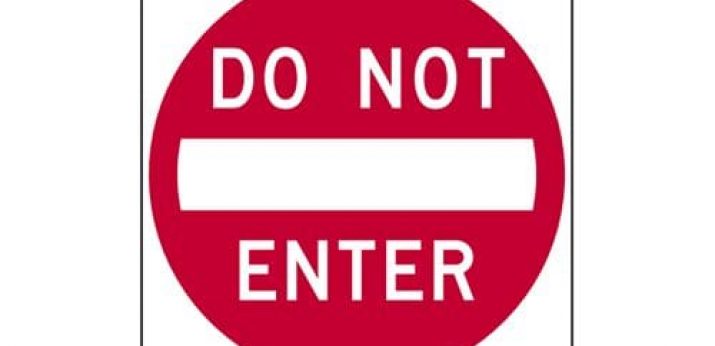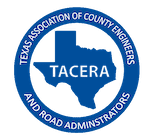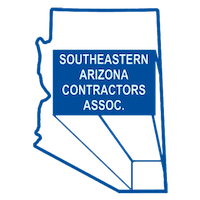At Transline Industries Inc., we stand as a reputable name and your go-to source for cutting-edge traffic calming solutions. We’re renowned for our commitment to safety and innovation, and we take pride in shaping secure road environments.
Do not enter sign meaning: In this article, we’ll turn our focus to Do Not Enter signs. These iconic markers are a huge part of traffic management and carry a tremendous amount of significance. They’re like silent guardians that guide drivers away from restricted zones while also diverting them from potential dangers.
Do Not Enter Signs and Traffic Safety
As we look at the Do Not Enter sign meaning, you’ll learn that it’s somewhat of a linchpin in ensuring safety on the road.
What does a Do Not Enter sign mean? At its core, a ‘Do Not Enter’ sign is a visual command that instructs drivers not to proceed into a specific area on the road. It’s a universally understood sign that transcends language barriers.
The Do Not Enter road sign reduces the risk of wrong-way incidents and collisions and helps people stay along the intended routes of the road. In many cases, they also prevent unauthorized access so that drivers will remain safer and the drivers behind them will experience a predictable flow of traffic.
Why is the proper placement of Do Not Enter road signs important? The effectiveness of a Do Not Enter sign hinges on its correct placement and visibility. These signs need to be strategically located and easily seen by people navigating the road so they have time to make informed decisions as soon as possible.
According to the National Transportation Safety Board (NTSB), driving the wrong way causes up to 3% of all fatal collisions on divided highways. This issue is caused by people failing to comply with the Do Not Enter signs that are placed at the exit ramps of major highways.
Do not enter signs are unique compared to other road signs. Cautionary signs typically forewarn you of dangers, while a Do Not Enter sign stands apart from them by prohibiting entry outright.
These signs are a universal red circle with a diagonal line signal and command in the middle of the sign. The sign boldly asserts itself to ensure people can’t ignore it.
Do Not Enter Traffic Sign Regulations
In the U.S., the prominence of the Do Not Enter traffic sign is blanketed with a bunch of regulations that control how they’re used and enforced. The regulations surrounding these signs are established at both federal and state levels.
The Do Not Enter sign is like the traffic cop telling you, “Stop right there!” To keep things easy to understand between states, it follows the Manual on Uniform Traffic Control Devices (MUTCD) rules, dictating its look, size, and where to put it. Day or night, it’s all reflective or lit up. The MUTCD even suggests using extra flairs or pavement markings to make it more visible.
Ignoring these signs in the U.S. can lead to varying fines, contingent on the state and the seriousness of the offense. Fines can reach $200 in certain states, though amounts differ elsewhere. Factors like causing accidents or harm can escalate fines. Consequences may extend beyond fines to include license points, suspension, revocation, or potentially even jail time, depending on the circumstances. It’s crucial to be aware of and adhere to specific local regulations to avoid such penalties.
Types of Do Not Enter Road Signs
If you’re ever driving in different countries, it helps to know that there are different variations of the sign. As we mentioned earlier, the conventional Do Not Enter road sign is a red circle with white lettering. This is the universal symbol for restricted entry.
The Do Not Enter in Spanish signs might be a bit different. It’ll typically be labeled as “No Entrar” or “Prohibido el Paso.” These phrases convey the same meaning as the English version of the sign.
Depending on where you live, you may also see other versions of the sign, such as:
- Wrong way to not enter sign
- Stop Do Not Enter sign
While these signs are relayed a bit differently, they share a common goal: preventing unauthorized entry. It doesn’t matter if it’s through standard text, symbols, or other languages; they’re all about delivering that universally understood message that you should steer clear for a safer road ahead.
Using Do Not Enter Signs Effectively
Ensuring the effectiveness of Do Not Enter signs goes beyond just installation.
Proper Installation and Maintenance Tips
There are a few installation and maintenance tips to keep in mind.
Location matters: Signs should be installed at entry points so that everyone on the road can see and understand them.
Clarity: The signs should be free of any obstructions. Overgrown trees or vegetation can reduce the effectiveness of the signs. Regular trimming near these signs is important.
Reflectivity: Signs should be reflective to enhance visibility during low-light conditions.
Routine check-ups: Regular inspections should be conducted to assess signs for wear, damage, or fading. Sometimes, environmental conditions affect the visibility and durability of these signs, so it’s important to stick to scheduled maintenance.
Transline Industries’ Solutions
At Transline Industries Inc., we offer a variety of traffic control solutions and pavement marking equipment, including:
We’re committed to quality and safety, and our products redefine standards to ensure a secure and efficient road environment for all. Visit our website or call us today at (800) 321-1751.













